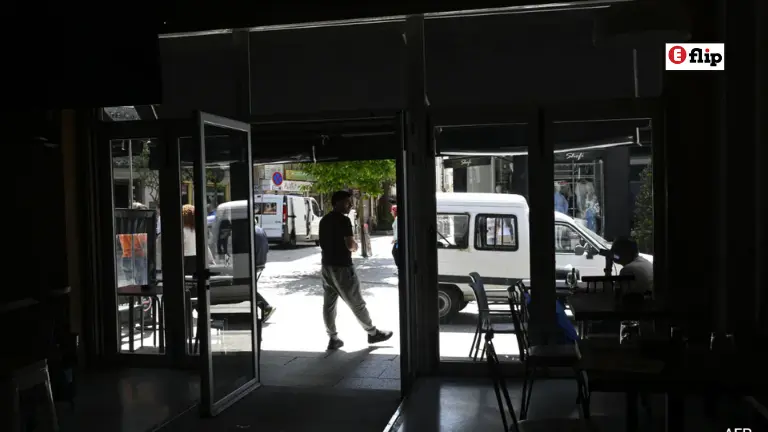On April 28, 2025, a massive Spain blackout plunged the Iberian Peninsula into darkness, bringing Spain’s economy to a screeching halt. The unprecedented power outage, which also affected Portugal and parts of southwestern France, disrupted public transportation, shuttered businesses, and left millions stranded. For people like Maria, a Madrid shop owner who lost a day’s revenue, and Carlos, a commuter stuck in a darkened metro station, the Spain blackout was a jarring disruption to daily life. As of April 29, 2025, power is gradually returning, but the economic fallout lingers.
Real-Time Updates: The Situation Unfolds
As of April 29, 2025, the Spain blackout is easing, with about 60% of Spain’s power restored, according to Red Eléctrica, the country’s grid operator. In Portugal, 85 of 89 power substations are back online, including central Lisbon. The outage, which began around 12:30 p.m. local time on April 28, affected millions across Spain and Portugal, paralyzing cities like Madrid, Barcelona, and Lisbon. Spain’s Interior Ministry declared a national emergency, deploying 30,000 police to maintain order, while Portugal’s Prime Minister Luís Montenegro labeled it an “energy crisis”.
The Spain blackout halted public transportation, with metro systems in Madrid and Barcelona evacuated and train services, including Renfe’s high-speed AVE, suspended nationwide. Airports, including Madrid-Barajas and Lisbon, faced disruptions, with 20% of flights canceled. Businesses, from small shops to major manufacturers, shut down, and telecommunications faltered, with phone lines and WhatsApp operating at reduced capacity. By late April 28, power began returning to northern and southern Spain, aided by interconnections with France and Morocco, but full restoration could take 6–10 hours more.
The Spain blackout brought public transportation to a standstill, leaving commuters like Carlos, a 32-year-old office worker, stranded. “I was on the Madrid Metro when everything went dark,” he told Reuters. “We walked through tunnels with phone torches—it was chaos”. Spain’s railway operator, Adif, reported voltage losses, halting all train traffic, with no services resuming until at least April 29. In Barcelona, metro and tram systems shut down, forcing thousands onto overcrowded buses or to walk home.
Airports, critical hubs for Spain’s tourism-driven economy, were hit hard. Madrid-Barajas and Barcelona-El Prat operated on backup generators, but flight delays and cancellations stranded passengers. In Lisbon, airport terminals closed, with TAP Portugal urging travelers to stay away. Traffic lights failed across cities, causing gridlock as police manually directed traffic. The Spain blackout exposed the vulnerability of interconnected transport systems, with Transport Minister Óscar Puente warning of days-long disruptions.
Business Paralysis: Economic Fallout
The Spain blackout dealt a severe blow to businesses, from small retailers to major industries. Maria, who runs a café in Madrid’s Arganzuela neighborhood, lost power and customers. “No lights, no card payments, no sales,” she said. “I had to throw out spoiled food.” Retail trade faced millions in losses as shops closed, ATMs failed, and electronic payments stalled. In Terrassa, generator stores sold out as businesses scrambled to cope.
Major industries, including Spain’s motor vehicle, food production, and chemical sectors, ground to a halt. Car and truck plants, employing thousands, stopped production, and smaller suppliers without backup power faced significant losses. Fuel supply disruptions hindered trucking, further choking supply chains. The Spain blackout’s economic impact is still unfolding, but analysts like Kyle Chapman of Ballinger Group predict a “short-term hit” if power returns soon, though a week-long disruption could cost billions.
Challenges: Navigating the Crisis
The Spain blackout poses multiple challenges:
- Unknown Cause: Authorities have no conclusive explanation, with theories ranging from a cyberattack to extreme temperature variations causing “oscillations” in Spain’s grid. Portugal’s REN operator suggested a “rare atmospheric phenomenon,” but investigations by Spain’s Joint Cyberspace Command and National Cryptologic Center continue.
- Grid Restoration: Restoring power is complex due to the alternating current’s specific frequency requirements. A drop in frequency caused synchronization failures, and avoiding a “black start” (total grid failure) remains critical.
- Economic Recovery: The Spain blackout disrupted Spain’s tourism and manufacturing sectors, key economic drivers. Restoring confidence among travelers and businesses is urgent.
- Public Safety: With traffic lights out and elevators stalled, Madrid reported 174 elevator rescues and 23 metro evacuations in Barcelona. Ensuring safety during outages is a priority.
- Communication Overload: Telecom failures strained emergency lines, prompting Prime Minister Pedro Sánchez to urge citizens to avoid non-essential calls.
For Maria, the Spain blackout meant not just lost income but fear for her elderly parents, stuck without power. “I couldn’t even call them,” she said. The outage’s scale—described as Europe’s largest ever—underscores the fragility of modern infrastructure.
What’s Next: Recovery and Resilience
As Spain and Portugal recover from the Spain blackout, several steps are critical:
- Power Restoration: Red Eléctrica aims to fully restore power by April 29, leveraging hydroelectric plants and interconnections with France and Morocco. Portugal’s REN predicts normalization within a week in worst-case scenarios.
- Investigation: Determining the cause—whether atmospheric, technical, or malicious—is urgent. The European Commission is coordinating with both nations, ruling out a cyberattack for now.
- Economic Support: Governments may need to offer aid to businesses like Maria’s and expedite transport recovery to mitigate losses. Tourism campaigns could restore traveler confidence.
- Infrastructure Upgrades: The Spain blackout highlights the need for resilient grids, especially as Spain transitions to 81% renewable energy by 2030. Investments in backup systems and cybersecurity are essential.
- International Cooperation: Ukraine’s offer to share outage expertise, based on its experience with Russian attacks, could inform recovery strategies.
A Human Story of Disruption and Hope
For Carlos, the Spain blackout meant a three-hour walk home, but also moments of kindness—strangers sharing water and directions. For Maria, it was a day of loss but also resolve to reopen her café stronger. Across Spain and Portugal, millions faced uncertainty, from stranded tourists to workers like Joanly Perez, a Madrid doctor who saw panic-buying in supermarkets. Yet, resilience shone through: firefighters rescuing people from elevators, police directing traffic, and communities rallying in the dark.
The Spain blackout is a wake-up call, exposing vulnerabilities but also the strength of human spirit. As power returns, Spain faces the task of rebuilding trust and systems, ensuring such chaos doesn’t repeat.
Were you affected by the Spain blackout, or inspired by the resilience of those impacted? Share your story or ideas for recovery in the comments. Want to stay updated? Follow our blog for the latest on Spain’s recovery and global crises. Let’s support Spain’s comeback—together!








